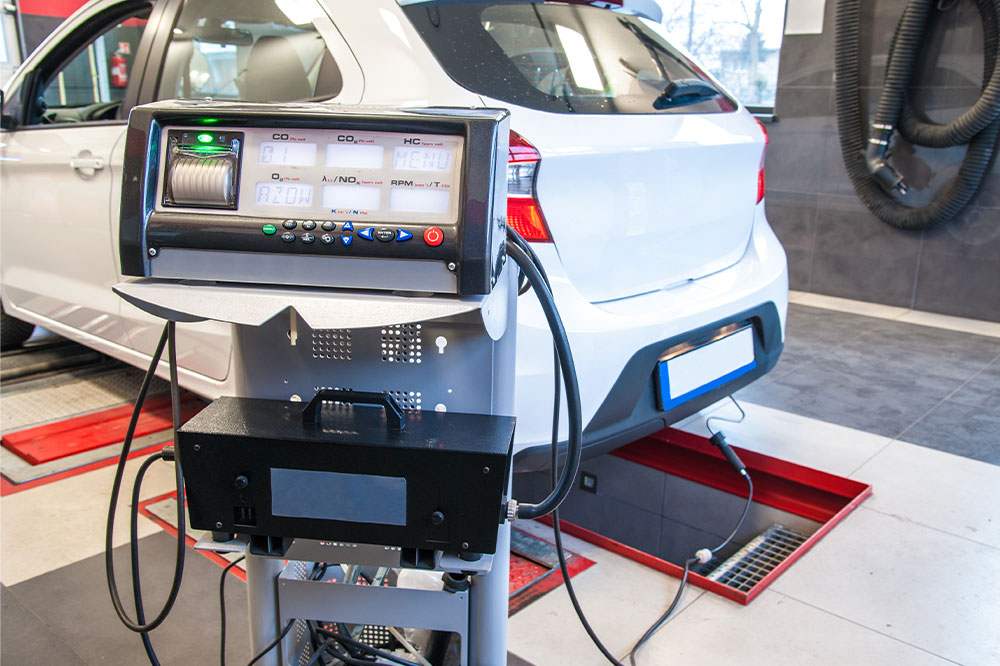Comprehensive Guide to Vehicle Emissions Testing: Ensuring Compliance and Protecting the Environment
This comprehensive guide explores the importance of vehicle emissions testing, how it improves vehicle performance, protects the environment, and ensures legal compliance. It provides detailed insights into the testing process, common causes of failure, and practical tips for passing emissions tests. Regular emissions checks are a key aspect of vehicle maintenance that supports public health and environmental sustainability. Learn how to prepare your vehicle for testing and stay compliant with local regulations to contribute to cleaner air and a healthier planet.

Complete Guide to Vehicle Emissions Inspection and Its Critical Role
Vehicle emissions testing is an essential part of modern vehicle maintenance and environmental responsibility. It is designed to help vehicle owners identify potential mechanical issues that could lead to increased fuel consumption and higher pollution output. Conducting regular emissions tests ensures vehicles are operating efficiently and meets the regulatory standards set by authorities. In today's digital age, finding an affordable and reliable emissions testing center is straightforward — a simple online search using keywords like "nearby emissions testing" or "schedule emissions check" can lead you to nearby facilities. Understanding the importance of emissions testing, how it works, and what steps to take for passing the test is crucial for every vehicle owner.
The Significance of Emissions Testing
Improving Vehicle Performance and Longevity
Emissions testing is not just a regulatory requirement; it is a proactive approach to vehicle maintenance. By regularly assessing emissions, owners can detect early signs of mechanical issues such as clogged catalytic converters, faulty exhaust systems, or malfunctioning sensors. These problems, if left unaddressed, can significantly impair engine performance, reduce fuel economy, and lead to costly repairs down the line. Early detection and repair help keep your vehicle running smoothly, extending its lifespan and maintaining optimal performance.
Environmental Protection and Air Quality
Vehicles are significant contributors to air pollution, emitting damaging substances like nitrogen oxides (NOx), carbon monoxide (CO), volatile organic compounds (VOCs), and particulate matter. These pollutants degrade air quality, contribute to smog formation, and accelerate climate change. Regular emissions testing serves as a check against excessive pollutant levels, encouraging manufacturers to develop cleaner engine technologies and vehicle designs. As electric vehicles become more prevalent, emissions tests also support the transition towards environmentally sustainable transportation by ensuring traditional combustion engines meet strict standards.
Compliance with Legal Standards
Globally, governments enforce vehicle emissions standards to protect public health and preserve the environment. Regular testing guarantees that your vehicle complies with these regulations, preventing legal issues, fines, and penalties. Vehicles that fail emissions tests must undergo repairs to reduce emissions to acceptable levels. These regulations incentivize manufacturers and consumers to prioritize cleaner, more efficient technology, thereby fostering a culture of environmental responsibility.
Public Health Benefits
Vehicle emissions contain pollutants that pose serious health risks. Particulate matter and toxic gases can cause or exacerbate respiratory conditions such as asthma, bronchitis, and lung disease. Long-term exposure increases the risk of cardiovascular problems and certain cancers. By adhering to emissions testing requirements, vehicle owners contribute to lowering the overall emission levels, thereby protecting the health of communities, especially vulnerable populations like children, the elderly, and those with pre-existing health conditions.
Understanding How Emissions Testing Works
Emissions testing typically involves a quick, non-invasive process that ranges from about $10 to $30 depending on your location. The test begins with verifying your vehicle's Vehicle Identification Number (VIN) and conducting a brief visual inspection of exhaust and emission control components. Next, the vehicle is usually placed on a dynamometer— a device that simulates driving conditions. During this process, the vehicle’s exhaust gases are measured at various speeds and engine loads to assess emissions levels accurately. If emissions are within legal limits, your vehicle passes the test. However, if emissions exceed acceptable standards, your vehicle may require repairs, such as replacing faulty oxygen sensors, fixing leaks, or repairing the catalytic converter. The technician will often inspect various components of the exhaust system to diagnose the root cause of elevated emissions.
Common Reasons for Emissions Test Failures
Several factors can lead to a failed emissions test, including old or contaminated engine oil, faulty spark plugs, a malfunctioning oxygen sensor, or a check engine light indicated by the vehicle’s onboard diagnostics system. Other causes include a dirty air filter, a loose or cracked gas cap, or excess oil in the air-fuel mixture. Some regions offer waivers or extensions if repairs are costly, but repeated failures can result in fines or restrictions until the vehicle is repaired and passes a subsequent test. Regular maintenance and timely repairs help avoid these setbacks and ensure your vehicle remains environmentally compliant.
Tips for Ensuring Your Vehicle Passes Emissions Tests
Perform Regular Oil Changes: Fresh oil minimizes contaminants that can negatively influence emissions. Changing the oil as per manufacturer recommendations helps maintain engine cleanliness.
Check and Adjust Tire Pressure: Properly inflated tires reduce overall engine load, which can lower emission levels during testing.
Schedule Routine Tune-Ups: Regular tune-ups ensure that ignition systems, fuel injectors, and other critical components operate efficiently, reducing emissions.
Inspect and Replace Air Filters: Clean air filters improve airflow and combustion, contributing to lower emissions and better engine performance.
Ensure the Gas Cap Is Secure: A loose or damaged gas cap can cause emissions system warnings and lead to test failure. Replace or tighten as necessary.
To maximize your chances of passing emissions tests, plan ahead by locating nearby testing centers and scheduling inspections well in advance. Proper vehicle maintenance not only helps you stay compliant with local laws but also benefits the environment by reducing harmful emissions.
"




